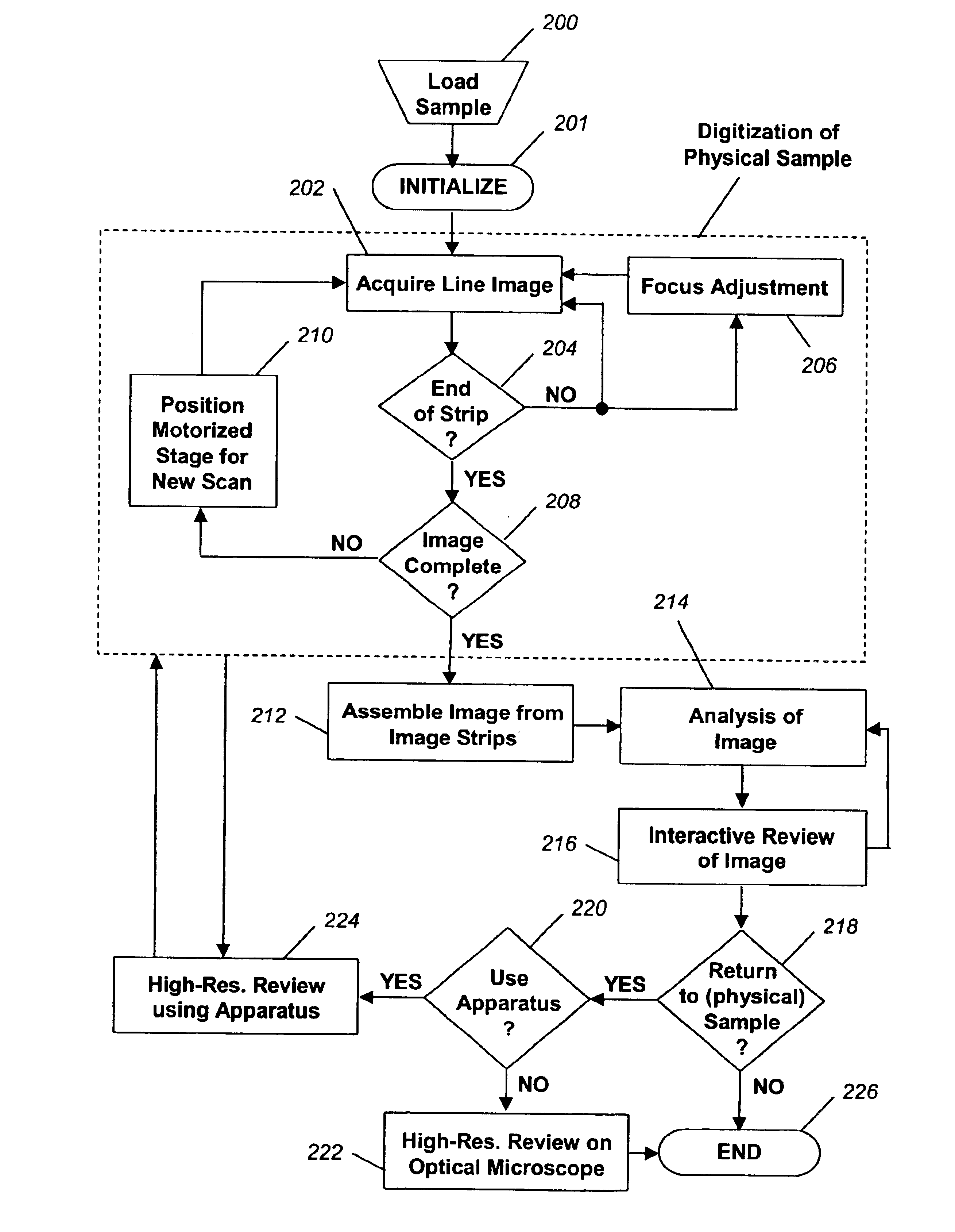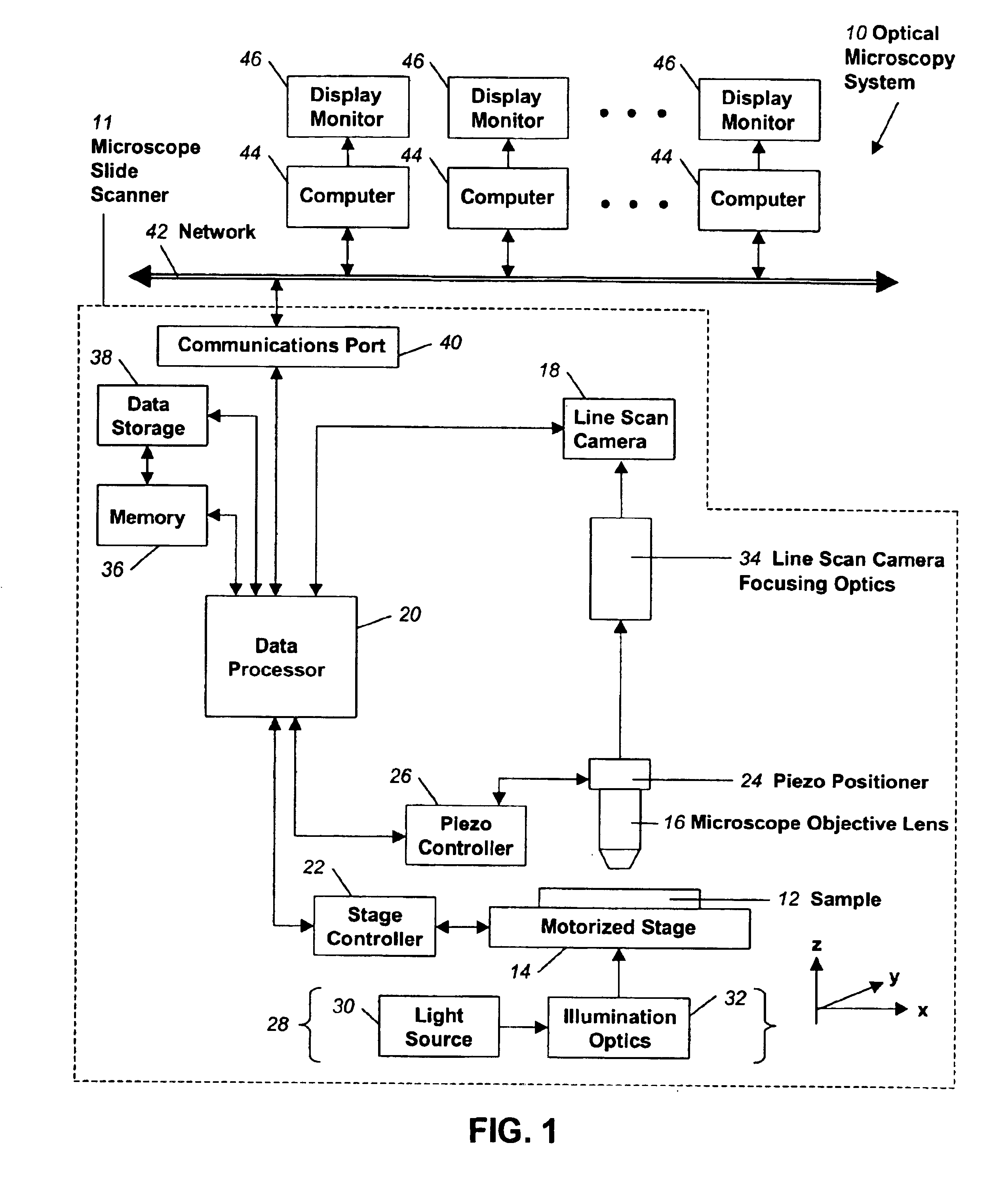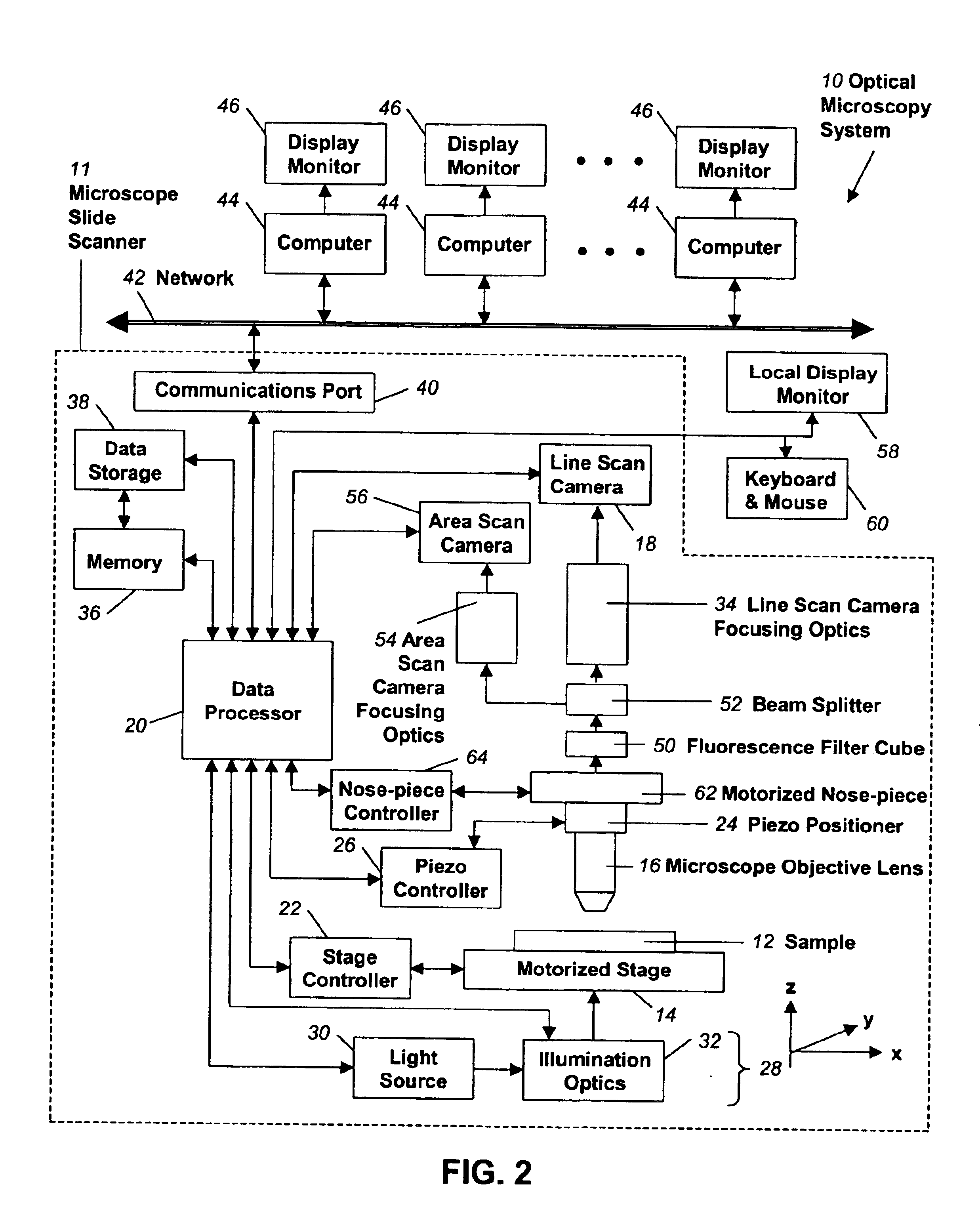Fully automatic rapid microscope slide scanner
a slide scanner and fully automatic technology, applied in the field of optical microscopy, can solve the problems of limiting the practical utility of images, taking a long time, consuming a lot of equipment, and consuming a lot of resources,
- Summary
- Abstract
- Description
- Claims
- Application Information
AI Technical Summary
Problems solved by technology
Method used
Image
Examples
second embodiment
[0047]Turning now to FIG. 2, a block diagram of an optical microscopy system 10 according to the present invention is shown. In this system 10, the scanner 11 is more complex and expensive than the currently preferred embodiment shown in FIG. 1. The additional attributes of the scanner 11 that are shown do not all have to be present for any alternate embodiment to function correctly. FIG. 2 is intended to provide a reasonable example of additional features and capabilities that could be incorporated into the scanner 11.
[0048]The alternate embodiment of FIG. 2 provides for a much greater level of automation than the presently preferred embodiment of FIG. 1. A more complete level of automation of the illumination system 28 is achieved by connections between the data processor 20 and both the light source 30 and the illumination optics 32 of the illumination system 28. The connection to the light source 30 may control the voltage, or current, in an open or closed loop fashion, in order...
PUM
| Property | Measurement | Unit |
|---|---|---|
| perimeter | aaaaa | aaaaa |
| width | aaaaa | aaaaa |
| acquisition time | aaaaa | aaaaa |
Abstract
Description
Claims
Application Information
 Login to View More
Login to View More - R&D
- Intellectual Property
- Life Sciences
- Materials
- Tech Scout
- Unparalleled Data Quality
- Higher Quality Content
- 60% Fewer Hallucinations
Browse by: Latest US Patents, China's latest patents, Technical Efficacy Thesaurus, Application Domain, Technology Topic, Popular Technical Reports.
© 2025 PatSnap. All rights reserved.Legal|Privacy policy|Modern Slavery Act Transparency Statement|Sitemap|About US| Contact US: help@patsnap.com



